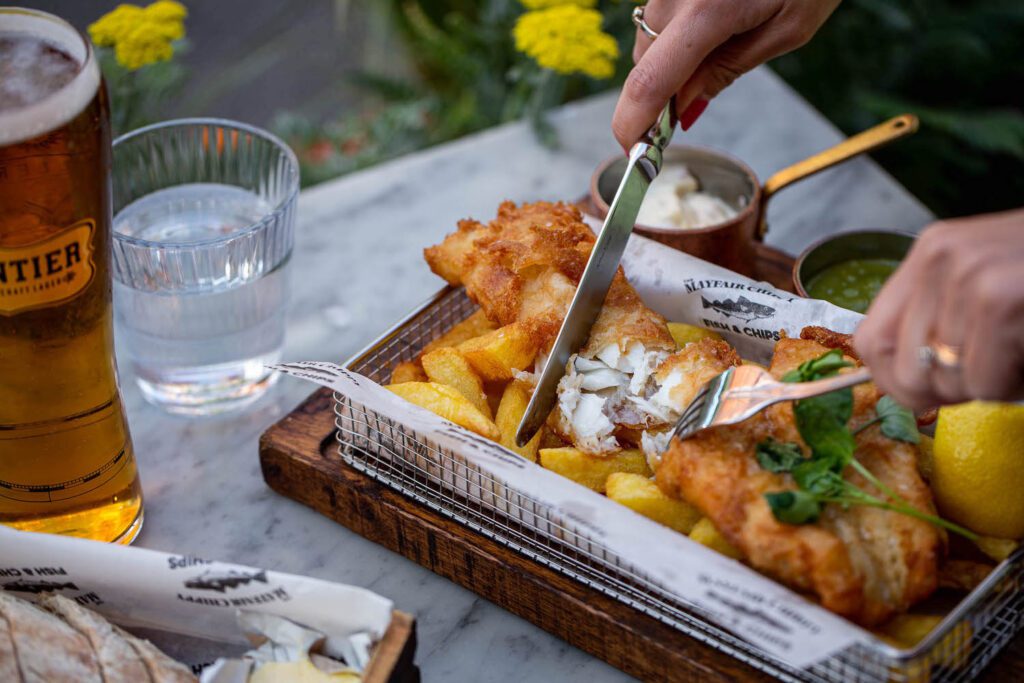In Egypt, tourists seldom have the opportunity to eat an authentic meal. Cruise ships, hotel managers, and travelers themselves are so afraid of a gastroenteritis outbreak -also called turista- that they carefully avoid street food or serving local dishes to tourists. Sadly, that means tourists are reluctant to taste Egyptian food, thinking it is unsafe. Whatever the reasons, the result is the same: travelers miss out on authentic Egyptian meals.
That’s why we jumped at the offer proposed by our guide, while en route to the Valley of the Kings, to stop and have an authentic breakfast near the ancient craftsman village of Deir el-Medina.
Deir el-Medina
Deir-el-Medina is as an ancient Egyptian workmen’s village and the modern Arabic name for the worker’s village, which was home to the artisans and craftsmen of Thebes who built and decorated the royal tombs in the nearby Valley of the Kings and Valley of the Queens. It was called Set-Maat, “The Place of Truth”. It is not only significant because of the people that lived there, but also because it taught historians and Egyptologists a lot about the daily life of ancient Egyptian people.
Today you can follow paths to through the ancient village and visit the Christianised Temple of Hathor that became a monastery, as well as some of the tombs to see the well-preserved paintings.
Today this village is a major excavation site and has been emptied of all its inhabitants. But a new village built close by features craftsmen who have been able to carry on their activities and preserve their know-how, which the share with tourists instead of pharaohs.

Bread, cheese, fava beans and more
 A craftsman uses a pick to shape stone
A craftsman uses a pick to shape stone
We stopped at a workshop funnily called “Opera Aida for Alabaster”, an unlikely reference to Verdi’s opera. Here, stonecutters use alabaster and flint to make antique-style statues and their shops are filled with representations of ancient Egyptian gods and goddesses, such as Horus, Bastet, Khnum, Isis, and Anubis. They gave us a demonstration of their work, which seemed pretty basic, using simple tools.
Egyptian Breakfast
We finally made it t our Egyptian breakfast, which didn’t disappoint with its array of flavorful dishes that made our stomachs growl just by looking at them.

Eggah, similar to a frittata, can be filled with numerous ingredients and spices, and is common at breakfast
Since local products are favored it was a vegetarian breakfast mainly made with locally grown vegetables and legumes, but you can also find meat as well. Wherever you end up, trust that the Egyptians sure know how to prepare an excellent breakfast with a wide variety of dishes, to choose from.
All will no doubt come with a staple: Aish Baladi, a type of bread similar to pita. This bread used to be made from an ancient type of wheat called emmer and baked in clay ovens crafted from mud of the Nile River. As is the case in many countries, bread is used as utensils to scoop food from the plate. This bread has been called Aish – life – Baladi – authentic – since ancient times. It truly is a cornerstone of Egyptian cuisine and has a place on every table in the country.
We used it to eat different kinds of dips including ful medames, or simply fūl, a stew of slowly cooked fava beans served with olive oil, cumin, chopped parsley, garlic, onion, lemon juice, chili pepper, and herbs snd spices. It’s served as a breakfast food that is common for breaking the fast, which is why it is extremely popular during Ramadan. Ful, or fava beans, is the national dish of Egypt.
We also had ful hammam, literally translated to bath beans, made with smaller fava beans. The Ta’ameya (Egyptian falafel) was amazing and is an all-time favorite street food in Egypt. In most parts of the Middle East, falafel is made with ground chickpeas. In Egypt however, it’s made with dried fava beans. Ta’ameya is fluffier and has more of a moist texture that Middle Eastern falafel. It is also greener thanks to the fava beans.
We enjoyed an egg dish, called eggah, which was between a thick omelet or frittata and baked scrambled eggs. This Egyptian omelette can be made with just about any ingredients and herbs, so you could eat a different style of eggah every day. We were also served a fresh white cow’s milk cheese called gibna beda.
Thanks to the herbs and spices including cumin, cinnamon, coriander, cloves, parsley, bay leaves, or dill, everything was flavorful without being spicy. We ended our breakfast by dipping pieces of bread into a large bowl of honey.
The Takeaway
We all know breakfast is an important meal of the day, and a morning of delicacies made the same way they were when pharohs walked the land is the perfect way to fuel your Egyptian adventure. So wherever you go in this north African country, treat yourself to an Egyptian breakfast. We can confirm that turista didn’t strike us either, and we have only good memories of this simple but delicious morning meal.
***
BeSeeingYou In: Egypt
Good to know: There is much more to Egyptian cuisine than kebab, falafel and shawarma.
Wow! Factor: Archaeological evidence of cheese making in Egypt dates back more than 5,000 years.
Tip: Tuck into authentic Egyptian cuisine on a food tour in Cairo (can be made vegetarian).
Author bio: Annick Dournes
Photos: Frederick De Poligny









